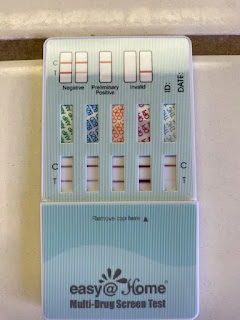The Pitfalls of Self-Testing Urine Drug Tests: Ignoring Specific Gravity and Creatinine Levels
Introduction:
Self-testing at home may not always provide accurate results due to various factors, particularly the issue of dilution. Many individuals resort to detox drinks or consume significant volumes of liquids before a drug test, aiming to flush out toxins. However, this practice may lead to false negatives, as self-tests often overlook crucial indicators like specific gravity (SG) and creatinine levels, which are essential for assessing dilution in labs.
The Dilution Dilemma:
Dilution is a common method employed by individuals attempting to pass a drug test. Mega detox carbo drinks, often marketed as miracle solutions, claim to eliminate traces of drugs from the system by promoting urination and dilution. While these drinks may temporarily reduce the concentration of drugs in the urine, they create a narrow time window for accurate testing.
False Negatives and Dilution:
One major flaw in self-testing kits is their failure to consider specific gravity and creatinine levels. When urine is diluted, the concentration of these substances decreases, potentially leading to false negatives on drug tests. Traditional self-tests may not account for these vital parameters, creating a misleading impression of a clean system.
The Role of Specific Gravity and Creatinine:
Specific gravity measures the density of urine, indicating its concentration. Creatinine, a waste product from muscle metabolism, is another indicator of urine concentration. Both SG and creatinine levels are crucial for assessing the validity of a urine sample. Low levels of these indicators suggest dilution, potentially compromising the accuracy of drug test results.
Urinary Adulteration Test:
To address the dilution issue, a separate dip test called a Urine Drug Adulteration Test should be considered. This test specifically checks for alterations in urine composition, including dilution attempts. By incorporating specific gravity and creatinine measurements, it provides a more comprehensive analysis of the sample's integrity.
Self-Testing Guidelines:
For those opting for self-testing after consuming a significant volume of liquid, it is crucial to consider specific gravity levels. Elevated fluid intake can lead to dilution, and without accounting for SG and creatinine, the accuracy of the test may be compromised. Users are encouraged to choose tests that include these parameters or use a separate Urine Drug Adulteration Test to ensure reliable results.
Conclusion:
While self-testing for drug use has become increasingly prevalent, individuals must be aware of the limitations and potential pitfalls, especially concerning dilution. Specific gravity and creatinine levels play a crucial role in determining the accuracy of drug test results. Incorporating these measurements, either through advanced self-testing kits or a separate Urine Drug Adulteration Test, is essential for a more reliable assessment of one's drug status. Awareness and adherence to proper testing guidelines will contribute to a more accurate portrayal of drug use in urine testing scenarios.







